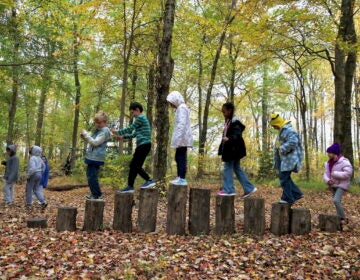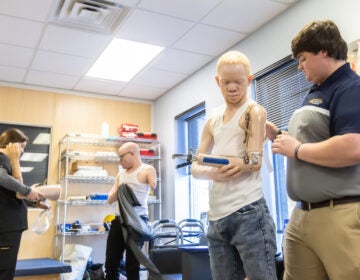How are New Jersey public schools doing? Depends on where you live
The New Jersey Education Association, NJ’s primary teacher union, trumpets, “New Jersey’s schools are the best in the nation!”
This is part of a series from education blogger Laura Waters of NJ Left Behind.
The New Jersey Education Association, NJ’s primary teacher union, trumpets, “New Jersey’s schools are the best in the nation!”
But a non-profit, Advocates for Children of New Jersey, counters, “an analysis of third graders’ performance on state reading tests from the 2009-2010 school year shows only 42 percent of traditional public school students and 46 percent of charter school students are proficient.”
Which is it? Well, it all depends on your zip code.
NJ’s public school system is characterized by the juxtaposition of great schools nestled next door to chronically failing ones. And, no, I’m not talking about our 31 poorest Abbott districts, our Camdens and Trentons and Asbury Parks.
For an example of this pattern of educational inequity, travel no further than Burlington County. First stop: Willingboro Public Schools, now on its fifth superintendent in six years. The NJ Department of Education ranks districts socio-economically, on a District Factor Group (DFG) scale from A (the poorest) to J (the richest). Willingboro rank is CD: not wealthy by any means, but not an Abbott either.
Let’s look more closely at Willingboro High School, now in its 9th year as a School In Need of Improvement. This means that, according to benchmarks of the federal legislation No Child Left Behind (NCLB) the school has failed to make “Adequate Yearly Progress” (AYP) for every year since NCLB was enacted.
NJ rates its public high school students’ proficiency in math and language arts through a test called the High School Proficiency Assessment (HSPA), usually considered an 8th grade-level test. According to the most recent DOE data, 41.9% of students at Willingboro High School failed the HSPA in language arts and 75.1% failed the HSPA in math. Average SAT scores for college-bound kids were 410 in Verbal and 410 in Math. The graduation rate was reported as 81.9%, although that number will drop now that the State is no longer permitting districts to self-report rates.
While seven Advanced Placement courses are offered, only four students earned a score of 3 or higher in 2010, the minimum passing grade. Willingboro is also considered the second most violent school in the state. (Edison has top honors in that category.)
On January 31st, Willingboro’s new superintendent, Dr. Ronald Taylor, gallantly addressed some of these issues in a “State of the District” strategic planning report. For a glance at the School Board, here’s a youtube clip which shows the Board President gaveling down a fellow board member and summoning security guards to remove her from the podium.
Now, let’s meander eight and a half miles north on 295 to another high school in Burlington County: Moorestown High School, with an DFG of I.
Moorestown High has made AYP every year since NCLB’s inception. Only 9.5% of its students failed the HSPA in math and 5% failed in language arts. (Actually, almost half its students were rated “Advanced Proficient” in math, a benchmark achieved by 1% of students in neighboring Willingboro.)
If you’re a student at Moorestown you have access to 20 A.P. courses, including Chinese Language, Latin-Vergil, and Microeconomics. Three hundred and seven kids scored a 3 or higher in 2010. Average SAT scores were 580 in Math and 560 in Verbal. Everyone graduates.
Here’s another difference between the neighboring high schools: Willingboro’s students are almost all black and Moorestown’s students are almost all white. That’s par for the course: New Jersey has one of the most segregated school systems in the country.
So how are NJ’s public schools doing? That all depends on whether you live in Willingboro or Moorestown.
Laura Waters is president of the Lawrence Township School Board in Mercer County. She also writes about New Jersey’s public education on her blog NJ Left Behind. Follow her on Twitter @NJleftbehind.
WHYY is your source for fact-based, in-depth journalism and information. As a nonprofit organization, we rely on financial support from readers like you. Please give today.




